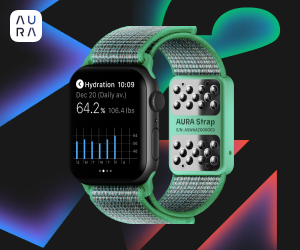If our goal is to be successful on the Internet and this entails having a good SEO positioning, web analytics is crucial to achieve it.
Launching into digital marketing actions without taking web analytics into account, is a big mistake since if we measure the result of our actions we will not know if we are achieving our objectives and, in addition, we will be losing great opportunities to optimize our strategy to improve the results.
Today, web analytics is essential for companies that have a presence on the Internet. Thanks to understanding the behavior of users in this medium, we can make more efficient marketing decisions and improve the ROI of our actions.
Many of the actions that we can achieve thanks to web analytics can be:
- Identify our target audience and connect with them.
- Understand their behavior patterns and meet their needs.
- Improve our marketing strategies.
- Optimize our website with the goal of more conversions.
- Improve the design of our website to offer a better user experience.
- Identify which channels are most profitable for us to connect with our audience and carry out actions.
There are many web analytics tools at our disposal, free and paid, that we must take into account since they can be highly beneficial to achieve our objectives.
The success of an Internet business lies, among many other aspects, in its positioning in search engines, mainly Google. Therefore, a main objective should be to achieve natural positioning in this search engine through SEO On Page and SEO Off Page strategies.
When we use any SEO action, it is essential to analyze and measure the impact it has on our positioning and to measure how these factors influence not only the positioning of our website but also what happens in the behavior of users when they are browsing on her.
Web analytics will allow us to measure our SEO actions and optimize our website to occupy the top positions in search engines and for users to find us when they search on the Internet.
Types of analysis applications.
- ClickTale.
- CrazyEgg.
- Clickdensity.
- Google Trends.
- Google Insights for Search.
- DoubleClick Ad Planner.
- Compete.
- Optimost.
- SiteSpect.
- Google Website Optimizer.
- SocialMention.
- Brandwatch.
- Radian6.
- UberVU.
- Google Alerts.
- TweetReach.
- TwitterCounter.
- Klout.
- SocialBro.
- Twitalyzer.
- Web Analytics.
- Log analysis.
- Measurement using labels.
- Measurement of website performance.
- Collect information on web design and usability.
- Analyze activity on social networks.
- Competitive intelligence.
In these types of tools, we must take into account that to analyze the traffic of our website there are different methodologies or ways of doing it.
The most widely used measurement systems are the following:
1. Site centric measurement systems
These measurement systems are site-oriented and require the implementation of a marker on each of the pages of the website to be measured, since this system is based on the analysis of the server's log files or on measurement by means of labels.
- With this type of system the following information is obtained:
- About the behavior of users on the website.
- User profile.
- Total number of visits to our website.
2. User centric measurement systems
These are measurement systems that are user-oriented and therefore, it will be user panels which constitute a representative sample of the population of users or Internet users as a whole.
In this case, the implementation of a marker is not required on each of the website pages in which it is to be measured. Nor will they offer us information about user behavior, they will simply offer us information on the following:
- Visits.
- Unique visitors.
- Average time of the visit.
- Sociodemographic profile of the audience.
3. Ad centric measurement systems.
- The label is included on those pages where the different ads will be displayed.
- When said page has been loaded, the tag makes a call to the advertising server (all the advertisements are stored on the server) sending it the necessary information and even a cookie with some socio-demographic data of the user, so that the server sends the specific ad to display.
- Once the ad is chosen, it is sent to the page to load on the corresponding page along with a cookie to control the number of times that ad will be shown to the same user.
- If a tracking code is included in the destination url of the banner, we can measure the number of impressions and the number of clicks and calculate the CTR for each of the banners.














Comments
Post a Comment